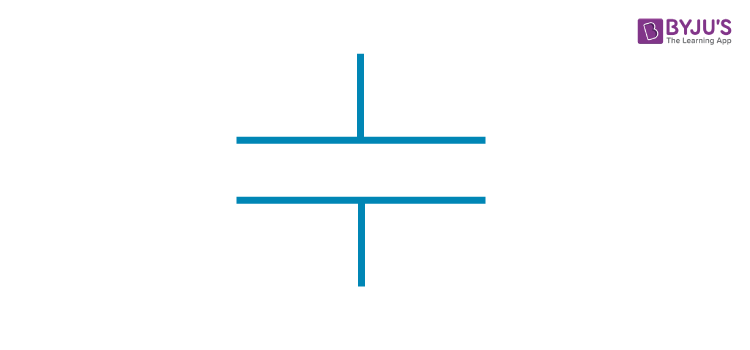Ceramic capacitors are the common types of capacitors used in most electrical instruments as they are more reliable and cheaper to manufacture.
These capacitors consist of ceramic or porcelain discs and are said to exist in a non-polarized form used in various industries. Ceramic material is known to be an excellent dielectric because of its poor conductivity and also an efficient supporter of the electrostatic fields.

What is Ceramic Capacitor?
A fixed value type of capacitor where the ceramic material within the capacitor acts as a dielectric is the Ceramic Capacitor. This capacitor consists of more number of alternating layers of ceramic and also a metal layer which acts as an electrode. The composition of this ceramic material in this capacitor tells us about the electrical behaviour along with its applications. We can define ceramic capacitor as:
A fixed-value capacitor where the ceramic material acts as the dielectric.
What is a ceramic material?
Ceramic material is an inorganic, non-metallic, often crystalline oxide, nitride, or carbide material. Example: carbon and silicon.
Ceramic Capacitor Polarity
It is important to understand that capacitor polarity is one of the essential points to be considered while connecting capacitors in an electric circuit. Capacitors can be classified into two groups based on their polarity:
- Polarised capacitor
- Non-polarised capacitor
When a capacitor is polarised, it will have two terminals, and they are known as anode and cathode. These terminals are considered while connecting them in a circuit. Whereas when the capacitor is non-polarized, there is terminal involved and therefore can be used in either way.
The ceramic capacitor is a non-polarity device which is found commonly in every electrical device and the dielectric material that is used in the capacitor is a ceramic material. Non-polarity device means the capacitor has no polarities.
Ceramic Capacitor Symbol
Following is the symbol for ceramic capacitor:

Ceramic Capacitor Types
The two most common types of Ceramic Capacitors are:
- Ceramic Disc Capacitors – These are often used as safety capacitors in electromagnetic interference suppression applications.

- Multi-layered Ceramic Capacitors – Ceramic capacitors with multilayer style (MLCC) are widely used and produced capacitors applied in the electronic equipment. These capacitors are manufactured in different styles and shapes and are used for RFI/EMI suppression systems, and also as feed-through capacitors along with larger dimensional systems as a power capacitors in transmitters.
Ceramic capacitors are developed in very small sizes and exhibit low maximum rated voltage. They are said to be non-polarized, i.e. can be safely connected to an AC source. Ceramic capacitors deliver greater frequency responses because they exhibit low parasitic effects such as inductance and resistance.
You may also want to check out these topics given below!
- Effect of Dielectric on Capacitance
- Capacitor And Capacitance
- AC Voltage Source Applied Across a Capacitor
- The Parallel Plate Capacitor
Characteristics of Ceramic Capacitors
Ceramic capacitors exhibit various characteristics as given below:
Accurate tolerances and precision
Ceramic capacitors are mainly used for high stability performances and low-loss devices. These devices provide very accurate results, and also, the capacitance values of these capacitors are stable with respect to the applied voltage, frequency and temperature.
Advantages of small size
In cases of packing, densities for high components are required, these devices are of great advantage when compared with the other capacitors. For example, a “0402” multi-layered ceramic capacitor measures about 0.4 mm x 0.2 mm.
High power and high voltage
The ceramic capacitors are manufactured in such a way so that they can survive higher voltages and such capacitors are power ceramic capacitors. These capacitors are much larger than the PCBs. They also have specialised terminals used for safer connection of high voltage supply. The power ceramic capacitors tolerate voltages ranging from 2kV- 100 kV.
Ceramic Capacitors Dielectric Classes
The ceramic capacitors dielectric classes help in selecting the capacitors based on their usage.
Class 1 Ceramic Capacitor Dielectric
- These provide the highest performance when it comes to stability and loss.
- They are used in oscillators and filters as they have a low loss.
- They are used in high tolerance capacitors for their stable temperature coefficients.
- The performance of the ceramic capacitor dielectric is defined by three characteristics, and they are significant figure changes in capacitance with respect to temperature.
- The second character numeric which gives the multiplier.
- The third character is a letter that gives the maximum error in the ppm/C.
Class 2 Ceramic Capacitor Dielectric
- The capacitance is dependent on the applied voltage.
- Class 2 dielectrics exhibit a non-linear temperature coefficient.
- They are used in coupling and decoupling applications.
- Again, the performance is based on three characteristics. The first character is the letter and explains the low-end operating temperature.
- The second character is numerically explains the high-end operating temperature.
- The third character is a letter and explains the capacitance change with respect to temperature.
Class 3 Ceramic Capacitor Dielectric
- The values of permittivity for class 3 dielectrics are exceedingly high that is up to 50,000 times when compared to class 2 dielectrics.
- They have high losses and are voltage-dependent capacitors.
Class 4 Ceramic Capacitor Dielectric
- These are also known as barrier layer capacitors.
Applications and Uses of Ceramic Capacitor
The applications of ceramic capacitors include:
- Transmitter stations
- Induction furnaces
- High voltage laser power supplies
- Power circuit breakers
- High-density applications
- Printed circuit boards
These capacitors are also used as a general-purpose capacitor and are also used across the brushes of the DC motors in order to minimise the RF noise.
Frequently Asked Questions – FAQs
What are the advantages of ceramic capacitors?
Following are the advantages of ceramic capacitors:
- Ceramic capacitors are affordable.
- The market has products in every size and shape.
- The stability of the capacitor is dependent on the ceramic dielectric.
Give one disadvantage of the ceramic capacitor.
The fundamental drawback of the ceramic capacitor is that it cannot achieve the high capacitance values of the polarised type.
What is the capacitance range for a ceramic capacitor?
The typical capacitance range for a ceramic capacitor is 10 pF to 0.1 μF.
How much voltage can the ceramic capacitor withstand?
The rated voltage availability of the ceramic capacitor is around 2V and above.
How to read a ceramic capacitor value?
When the same capacitor is used using alphabets instead of numerals, such as ABC, the value is computed as AB x 10C picofarad.
Watch the video and understand the idea behind a parallel plate capacitor.


Comments